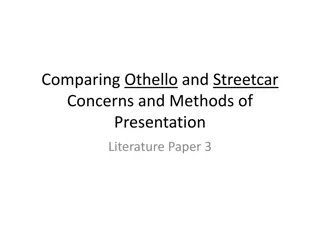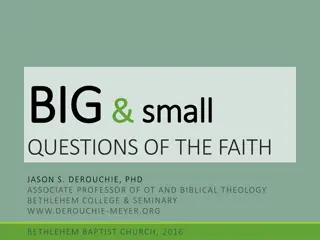
Exploring Eugene O'Neill and Desire Under the Elms
Delve into the life and work of Eugene O'Neill, a renowned American dramatist, known for masterpieces such as "Desire Under the Elms." Discover the themes of desire, revenge, tragedy, and more in his captivating plays, shedding light on faith, suffering, and the human condition. Join the journey through the theatrical world of O'Neill and experience the depth of emotions and storytelling that have solidified his legacy in American drama.
Download Presentation

Please find below an Image/Link to download the presentation.
The content on the website is provided AS IS for your information and personal use only. It may not be sold, licensed, or shared on other websites without obtaining consent from the author. If you encounter any issues during the download, it is possible that the publisher has removed the file from their server.
You are allowed to download the files provided on this website for personal or commercial use, subject to the condition that they are used lawfully. All files are the property of their respective owners.
The content on the website is provided AS IS for your information and personal use only. It may not be sold, licensed, or shared on other websites without obtaining consent from the author.
E N D
Presentation Transcript
DESIRE UNDER THE ELMS EUGENE 0 NEIL MA IV SEM PAPER XIV American Drama Department of English Govt College Paonta Sahib
Eugene ONeill,born Oct. 16, 1888, New York, N.Y. died Nov. 27, 1953, Boston, Mass. Eugene ONeillForemost American dramatist and winner of the Nobel Prize for Literature in 1936. His masterpiece, Long Day's Journey into Night (produced posthumously 1956), is at the apex of a long string of great plays, including Beyond the Horizon (1920), Anna Christie (1922), Strange Interlude (1928), Ah! Wilderness (1933), and The Iceman Cometh (1946).
Entry into theatreO'Neill's first efforts were awkward melodramas, but they were about people and subjectsprostitutes, derelicts, lonely sailors, God's injustice to manthat had, up to that time, been in the province of serious novels and were not considered fit subjects for presentation on the American stage.
9 Entry into theatreA theatre critic persuaded his father to send him to Harvard to study with George Pierce Baker in his famous playwriting course. Although what O'Neill produced during that year (191415) owed little to Baker's academic instruction, the chance to work steadily at writing set him firmly on his chosen path
O'Neill's first appearance as a playwright came in the summer of 1916, in the quiet fishing village of Provincetown, Mass., where a group of young writers and painters had launched an experimental theatre. In their tiny, ramshackle playhouse on a wharf, they produced his one-act sea play Bound East for Cardiff. The talent inherent in the play was immediately evident to the group, which that fall formed the Playwrights' Theater in Greenwich Village.
THEMES Desire, Revenge, and Tragedy As its title suggests, Desire Under the Elms centers on characters who are consumed by their personal desires. Domineering patriarch Ephraim Cabot (who goes by Cabot); his hardworking sons Simeon, Peter, and Eben; and his manipulative new wife, Abbie, all live on a farm in New England in the 1850s. Religion, Faith, and Suffering Desire Under the Elms shows how faith in God can bring about suffering. Aging patriarch Ephraim Cabot (who goes by Cabot) is a devout Christian man who often calls on God to guide his choices. Yet Cabot routinely makes choices that end up making him unhappy. He believes that he needs to live a grueling and laborious life as a 19th-century farmer in order to please God, and he rejects his sonsPeter and Simeon
Farming, Labor, and Poverty Desire Under the Elms, set in 1850 on a farm in New England, captures the profound hardships that 19th-century farm laborers often endured. The farm is built on land comprised mostly of stones, and the whole family including patriarch Ephraim Cabot; his late second wife, Maw; and his three sons Simeon, Peter, and Eben spend years relentlessly digging up stones to plough the unforgiving land.
Gender Desire Under the Elms takes place in the 19th-century United States, when women were commonly seen as inferior to men and consequently had fewer rights and opportunities. The play s male characters Cabot and his sonsSimeon, Peter, and Eben hold sexist attitudes, and they continuously mistreat and objectify the women in their lives. Cabot, for instance, works his second wife,






















